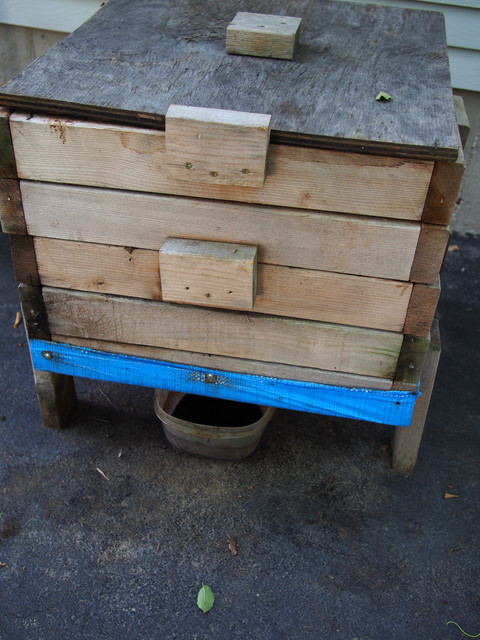Fair enough, here are the pics as promised.
The bin is a basic flow through design, I found the plans free online some where:

This is the top shelf where I've been adding all of the newest scraps and the new black soldier fly tenants love migrating up here for their feedings:


You can see some nice fungal growth as well:

Here's the 2nd shelf, this is where the BSFs live full time. I take the rent out of their ass, literally

. They have dropped so much frass in the past 3 weeks it's incredible. It keeps seeping down to the lower bins where the worms continue to work their magic (on the bottom 2 racks). The food you see on the top two shelves is 24-72 hrs old (except the cabbage). They reached a peak breeding period in the past couple days and have died back a little bit but I'll take pictures again in 48 hrs to show you how quickly they eat through these scraps. They love melon rinds, apple cores, any vegetables that have lots of water. Not a fan of cabbage, that's been sitting there for a while


The two shelves below are where the worms currently stay. They like it down there, it's dark, plenty of nutrients flowing down to them and it stays adequately hydrated.


Here is the leachate that fills up quickly, especially after big rains:

I've been diluting the leachate quite a bit. Haven't put the insect frass on anything yet, just letting it pile up until it gets cold. The plan is to migrate the worms indoors this year and hopefully I won't bring too many annoying bugs with them.
Alright I showed you mine, now you show me yours.
















